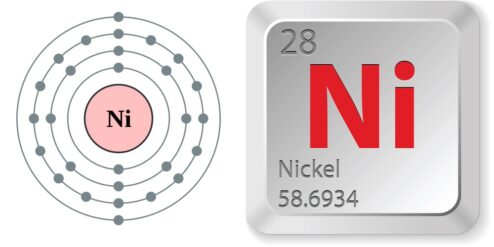Introduzione: Nickel is a naturally occurring metal that is widely used in industries and everyday objects. While it plays a minor role in the human body, excessive exposure or sensitivity to nickel can lead to nickel toxicity. This condition, although rare, can cause a range of symptoms and health problems. This article aims to provide an understanding of nickel toxicity, its symptoms, and the role of nickel allergy in this condition. It also discusses the medical diagnosis and treatment options for nickel toxicity.
Understanding Nickel and Its Role in the Body
Nickel is a trace element that is found in small amounts in the human body. It plays a role in the production of red blood cells and helps in the proper functioning of the liver and kidneys. However, the body’s requirement for nickel is minimal and is usually met through a balanced diet. Nickel is also present in various environmental sources such as soil, water, air, and food. Industrial use of nickel can lead to increased exposure and potential toxicity. Nickel toxicity occurs when the body absorbs more nickel than it can excrete, leading to an accumulation of the metal in tissues and organs.
Recognizing the Common Symptoms of Nickel Toxicity
Nickel toxicity can manifest in various ways, depending on the level and duration of exposure. Common symptoms include skin rash, itching, redness, and blisters, particularly in areas of direct contact with nickel-containing objects. Other symptoms may include nausea, vomiting, diarrhea, headache, and fatigue. In severe cases, nickel toxicity can cause shortness of breath, chest pain, and seizures. It’s important to note that these symptoms can also be caused by other health conditions, so a proper diagnosis is essential.
Acute Nickel Toxicity: What to Look For
Acute nickel toxicity refers to the sudden onset of symptoms following a high level of nickel exposure. This can occur in situations such as industrial accidents or ingestion of nickel-containing substances. Symptoms of acute nickel toxicity can be severe and include intense nausea, vomiting, abdominal pain, and diarrhea. In extreme cases, acute nickel toxicity can lead to respiratory failure, heart problems, and even death. Immediate medical attention is required in cases of acute nickel toxicity.
Chronic Nickel Toxicity: Long-Term Effects
Chronic nickel toxicity refers to the long-term effects of prolonged exposure to nickel. This can occur in people who work in industries that use nickel or those who have a nickel allergy and are frequently in contact with nickel-containing objects. Chronic nickel toxicity can lead to persistent skin conditions, respiratory problems, and kidney damage. There is also evidence to suggest that long-term exposure to nickel can increase the risk of certain types of cancer, particularly lung and nasal cancer.
The Role of Nickel Allergy in Nickel Toxicity
Nickel allergy is a common cause of contact dermatitis, a skin condition characterized by a rash, itching, and blisters. People with a nickel allergy are more susceptible to nickel toxicity as their immune system reacts to the presence of nickel in the body. This reaction can lead to inflammation and damage to tissues and organs. Avoidance of nickel-containing objects and materials is the primary method of managing nickel allergy and preventing nickel toxicity.
Medical Diagnosis and Treatment for Nickel Toxicity
Diagnosis of nickel toxicity involves a thorough medical history, physical examination, and laboratory tests. Blood and urine tests can measure the level of nickel in the body. Skin patch testing can help identify a nickel allergy. Treatment for nickel toxicity primarily involves reducing exposure to nickel. In cases of acute toxicity, hospitalization and supportive care may be necessary. For chronic toxicity or nickel allergy, lifestyle changes, medication, and in some cases, desensitization therapy may be recommended.
Conclusioni: Nickel toxicity, while not common, can lead to serious health problems. Awareness of the sources of nickel exposure and the symptoms of nickel toxicity can help in early detection and treatment. People with a nickel allergy need to be particularly cautious to avoid excessive nickel exposure. If you suspect that you or someone else may have nickel toxicity, seek medical attention immediately.
Per approfondire:
- Nickel Toxicity: Pathologies and Mechanisms: This research article provides an in-depth look at the pathologies and mechanisms of nickel toxicity.
- Nickel Allergy: This resource from the Mayo Clinic provides comprehensive information on nickel allergy, a common cause of nickel toxicity.
- Nickel in Drinking-water: This document from the World Health Organization provides information on the presence of nickel in drinking water and its potential health effects.
- Occupational Exposure to Nickel and Nickel Compounds: This resource from the Centers for Disease Control and Prevention provides information on occupational exposure to nickel, a common source of nickel toxicity.
- Nickel Carcinogenesis: This research article discusses the evidence linking long-term nickel exposure to cancer.


